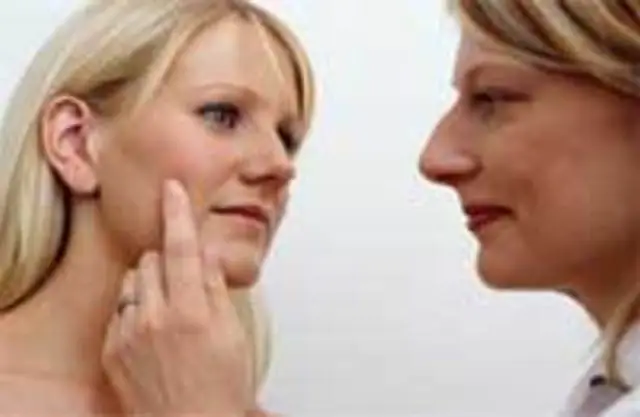

Problem skin is skin that, for a number of reasons, has any defects - rashes, pigment spots, scars, scars, vascular spots, acne, etc.
What is the problem?
Such a misfortune spares no one. You may have perfect skin, but when the time comes for hormonal changes, or you experience stress at work, or some other problems arise, you are no longer happy with the reflection in the mirror.
How long can it last?
Skin problems can be temporary, or they can become an obsessive nightmare. It depends on how old you are, what your health is, what your skin type is and many other factors. The most problematic skin types are dry, sensitive and oily.
Main feature dry sensitive skin — it does not always tolerate the active components contained in highly effective care products, it contracts even at the slightest contact with poor-quality water, and is irritated by contact with hard clothing or a man’s beard, or by weather and climatic influences. In this case, redness, rash, and irritation occur.
Oily skin It has a yellowish olive color, a greasy sheen, it is large-porous, with poor blood supply, and is prone to late formation of wrinkles. This skin is most often found in young women and girls, especially brunettes. The most common problems associated with oily skin are oily seborrhea and acne. The appearance of rashes is usually associated with hormonal processes in the body and is most often observed in adolescence and young adulthood.
Causes of rashes
Previously, it was believed that skin rashes were associated with certain types of food or dirty skin. Today, the main reasons are considered to be dysfunction of the sebaceous glands and the influence of psychological factors, such as stress. In general, problem skin is not a disease, but a combination of a number of problems: hyperfunction of the sebaceous glands, alternation of dry and oily areas of the skin, deep crater-shaped pores and many others. The cause of breakouts is the accumulation of bacteria, oils, and exfoliated dead cells in the hair follicles and pores. The most vulnerable are the large follicles located on the face, chest and upper back.
In the most severe cases, we can talk about internal diseases “coming to the surface” - from problems with the digestive system to hormonal imbalances. In addition, a predisposition to certain skin problems may be genetic. For example, dermatologists believe that the tendency to develop age spots is inherited.
A separate topic of conversation is aging skin. From the age of 50, as a result of a decrease in hormonal activity, the process of collagen renewal slows down, and women’s skin begins to fade, its tone and elasticity decrease. In this case, it is necessary to counteract a number of factors that cause increased dry skin, damage to the skin barrier, decreased secretion of the sebaceous glands, decreased levels of hyaluronic acid, slower cellular metabolism, damage to the elastic fibers of the dermis, etc.
Basically, skin problems are determined by its type, and this is a purely individual thing. Accordingly, the treatment will be special in each case. Therefore, if you yourself cannot name the exact reason, and, despite all your efforts, you cannot achieve the desired clean and smooth skin, contact a cosmetologist.
Treatment methods for problem skin
A cosmetologist will help you navigate the variety of existing therapy methods and select the optimal procedures.
- Many rejuvenation techniques have been developed aimed at slowing down the effects of age-related factors or correcting traces of their effects. Among them are such as smoothing wrinkles with biogel or Botox, as well as a mesotherapy method based on the introduction of various drugs and homeopathic cocktails into the mesoderm (the next layer of skin after the epidermis) by injection. Today it is widely used in aesthetic medicine and dermatology for the treatment of cellulite, obesity, skin aging, varicose veins, swelling, stretch marks, and scars.
- To remove various neoplasms, such as acne, papillomas, moles, spider veins, etc. They use the method of electrocoagulation (diathermocoagulation), based on cauterization of tissues with electric current.
- The method of ozone therapy is now quite popular - for the treatment of problematic and for rejuvenating aging skin. Ozone therapy - massage with ozonated oil, injection of an ozone-oxygen mixture subcutaneously and intradermally - reduces crow's feet, removes expression wrinkles, improves complexion.
- A whole group of methods under the general name “peeling” is designed to remove the stratum corneum of skin cells and protect young growing cells. Peeling can also be included in the treatment of problematic skin, especially in the case of teenage acne and to remove fresh stretch marks.
- To tighten aging skin, a lifting procedure is also performed.
- One of the most powerful influence factors in physiotherapy is ultrasound. Under the influence of ultrasonic vibrations, cellular metabolism and lymphatic drainage are activated. Accordingly, a very effective method is ultrasonic phonophoresis - a method based on a combination of ultrasound and special means.
- Treatment with dry cold air, or cryotherapy, is a technique that has been successfully used in cosmetology and dermatology for a long time, and is developing in two directions: cryodestruction (cryosurgery) and cryotherapy itself. Cryodestruction is cosmetic surgery (removal of warts, scars, tattoos, dark spots, keratomas) through local cooling to low temperatures. Cryotherapy is cryomassage, smoothing out wrinkles, strengthening hair roots - based on short-term cooling to low temperatures, which causes a narrowing of blood vessels with the subsequent expansion of not only existing but also reserve capillaries, which significantly increases blood flow to the site of application, and therefore exchange substances.
- A new direction in the treatment of problem skin is phytohormonal therapy. This method is aimed at correcting hormonal imbalance, which is one of the main risk factors for problematic skin.
The main questions for those with problem skin are how to eliminate oily shine and is it really possible to prevent acne? We will try to give an answer, and at the same time we will tell you what beauty products to use and what cosmetic procedures to sign up for.
- Signs of problem skin
- Causes of problems
- What kind of skin may be problematic?
- How to care for problem skin
- Preventing skin problems
- Cosmetical tools
- Cosmetology procedures
Signs of problem skin
Cosmetologists, as a rule, call oily skin prone to pimples and acne problematic. In patients suffering from acne, the formation of sebum significantly increases and its composition changes (the concentration of linoleic acid decreases). This leads to hyperkeratosis, and subsequently to clogging of pores and the appearance of closed and open comedones, or blackheads.
So, the main characteristics of problem skin:
The main skin problems are blackheads, oily shine, pimples, enlarged pores © iStock
Causes of problems
The number of sebaceous glands in the body of each person is determined genetically. But the intensity of the work of these glands can change throughout life. Skin problems can accompany you not only during adolescence, but also appear in your 30s and 40s.
What can cause them:
hormonal imbalance;
improperly selected care;
insufficient skin cleansing;
environmental pollution;
What kind of skin may be problematic?
Oily skin is considered a problem, but everyone is individual, so options are possible.
It is distinguished by oily shine and enlarged pores in the T-zone.
Characteristics: oily shine and enlarged pores all over the face.
Dehydrated problem
It shows an oily sheen, enlarged pores, and comedones. Inflammatory rashes - all over the face or in certain areas. Plus redness, peeling, burning, a feeling of tightness that occurs during drug treatment and aggressive care.
The most important step in caring for problem skin is cleansing © iStock
How to care for problem skin
Perhaps the most important step in caring for oily skin is cleansing. Morning and evening, with special means.
One of the main problems for owners of oily acne-prone skin is disruption of the surface hydrolipid layer. As a result of aggressive care or treatment, the skin becomes dehydrated and sensitive. Therefore, it is important to avoid soaps and alcohol-containing cosmetics and choose products with a pH of 5.0–5.5 (that is, corresponding to the normal pH of the skin).
Products for problem skin should contain acids and components with anti-inflammatory and mattifying effects.
Cleansing
Trying to get rid of oily sheen, owners of problem skin cleanse their skin “to the point of squeaking” using aggressive products and thereby achieve the opposite effect - they disrupt the hydrolipid layer, causing new inflammation and dryness.
Choose mild products, such as those containing zinc. It regulates sebum production. The composition must also contain restorative components.
Invest in foams and tonics. Be careful with scrubs. If you have an acute phase of acne, it is better to avoid mechanical exfoliants; they can increase the inflammatory process. If acne is already behind you, use the scrub twice a week. Choose one that contains antibacterial and sebum-regulating components.
Scrubs are not always suitable for problem skin, but it really loves masks with clay © iStock
Hydration
This important step in caring for oily skin is often ignored, mistakenly thinking that moisturizing will cause shine. Contrary to myths, oily skin can and should be moisturized to restore its hydrolipid mantle. Choose light textures - fluids and mousses.
Don't forget about the need to protect your already vulnerable skin from ultraviolet radiation. Both regular day cream and foundation should contain SPF.
Preventing skin problems
Wash your face lukewarm water. Hot water dries out the skin and stimulates sebum production.
Thoroughly take off your makeup every night. If you use oil or milk, wash off the products with water.
For morning wash choose a soft gel with fruit acids, then apply toner and moisturizer.
Exfoliants such as scrubs and peels should not contain too large abrasive particles, otherwise there is a risk of causing microdamage to the skin, which can then turn into inflammation.
Before applying the cream refresh your skin with toner, it will visually narrow the pores. Tonic formulas often have a cumulative effect - after a month of regular use, you will definitely notice that your skin has become more even.
During the day use matting wipes. As soon as you notice shine, blot your T-zone and chin.
Foundations should be light and contain soothing and caring components.
Cosmetical tools
Cleansing gel “Endless freshness”, L’Oréal Paris with rose and jasmine extract.
Gel, scrub, mask “Clean skin 3-in-1”, Garnier with zinc, pumice and white clay.
Mineral pore-cleansing mask, Vichy with white clay, allantoin and aloe vera.
Mattifying sorbet cream "Life-giving hydration", Garnier with green tea extract.
A fast-acting, targeted remedy against imperfections Normaderm Hyaluspot, Vichy, with salicylic, lipohydroxy and hyaluronic acids.
Facial gel with brush “Clean skin asset Expopro”, Garnier anti-acne for oily skin with salicylic acid.
Skin texture renewing product Epidermal Re-Texturizing Micro-Dermabrasion, Kiehl's with aluminum oxide powder, alginate and shea butter.
Purifying mattifying mask Effaclar, La Roche-Posay with two types of mineral clay.
Corrective care against imperfections Normaderm 24H, Vichy with salicylic acid.
Local action corrective agent Effaclar A.I., La Roche-Posay with niacinamide and lipohydroxy acid.
Cosmetology procedures
Below is a list of the most effective methods used by cosmetologists to alleviate problem skin.
In addition to cosmetic care for problem skin, there are cosmetic procedures © iStock
Chemical peeling
It is usually used to smooth out skin microrelief (including post-acne correction). As a means of combating acne and post-acne, aqueous solutions or gels based on various acids are used:
Plasma therapy
Today this is one of the most effective methods. A safe method of regenerative medicine is based on the principles of autohemostimulation. Its essence is to isolate plasma from the patient’s blood and administer it by injection.
Platelet-rich plasma has a powerful anti-inflammatory and immunomodulatory effect.
A course of 3–7 procedures in combination with chemical peels and laser resurfacing is recommended.
Ozone therapy
An effective anti-inflammatory technique for acne. It is recommended to carry out the procedures in a course of 10–15 sessions. The result is a significant reduction in inflammation, lightening of post-inflammatory spots and prevention of new rashes.
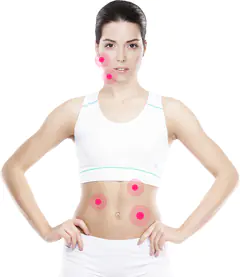
Acne, redness and other skin problems are often the result of gastrointestinal dysfunction.
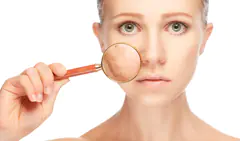
Skin problems can be caused by both external and internal reasons.
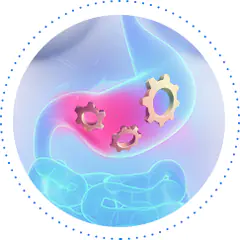
Often, rashes on the face indicate problems with the gallbladder, stomach, intestines or liver.

Skin problems can be caused by various types of pathogenic bacteria and toxins that disrupt the balance of normal intestinal microflora.
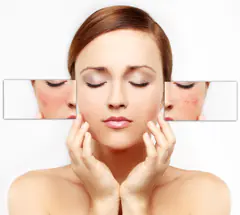
Problematic facial skin may be the result of poor diet or long-term use of medications.

Lack of timely cleansing of harmful substances can negatively affect the condition of the skin.
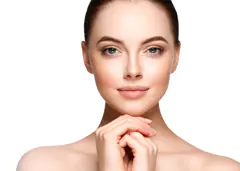
You can find out how your skin condition depends on your diet by passing a special test.

Lactofiltrum ® is a natural enterosorbent that removes various types of pathogenic microorganisms and toxins from the intestines. This can have a positive effect on the condition of the skin.
To learn more.

In the fight for beautiful and healthy facial skin, not all products are good. Many people prefer to use “external” methods - from advertised creams and cleansing toners to complex masking of acne with cosmetics and cosmetic procedures. But sooner or later there comes a moment of despair, that very critical point when it is necessary to admit: even expensive creams and procedures bring only a temporary effect...
Causes of problem skin
Skin rashes are not so often the result of external influences, because the natural covering of the body has its own powerful defense mechanisms against environmental threats. But it is much more difficult for the skin to resist internal problems, because it does not expect “attacks” from this side. It is precisely such deep-seated problems in the functioning of the body that often become the real cause of skin imperfections, because of which it is usually called “problematic”. And if before the age of 20 there is a standard excuse - “it’s a teenage thing, it will pass”, then at an older age constant rashes on the skin indicate health problems.
Hormonal imbalances
The most striking example is teenage acne, which occurs as a result of the development and formation of the hormonal system. This also includes manifestations of rashes during the premenstrual period in women. In older age, with an established hormonal background, problematic skin can be a consequence of increased testosterone levels [1].
Decreased local immunity
The skin also consists of its own immune cells, the so-called Langerhans cells [2]. Their functions can be disrupted by both external factors - UV radiation, cosmetics, and internal factors that arise as a result of frequent stress, bad habits or poor nutrition.
Genetic factors
Skin rashes may well be inherited. If one of the parents has hormonal disorders, there are changes in the functioning of the sebaceous glands, or an abnormal composition of sebum, then there is a possibility that the child will develop the same problems over time [3].
Gastrointestinal (GIT) dysfunctions and poor nutrition
Problems in the gastrointestinal tract mechanism can cause intoxication of the body. Malfunctions in the intestines or stomach contribute to the “stagnation” of undigested food, which in turn becomes a real poison for the body, turning into toxins. The skin performs an excretory function, which means that it will also have to deal with gastrointestinal problems. But the organ is not designed for such loads, so the skin ducts become clogged with harmful substances, as a result of which foci of inflammation form on it.
Allergic reactions
The body's reaction to various irritants can manifest itself in the form of rashes, inflammation, and itching on the skin. Almost any product or even a weather phenomenon can become an allergen - from milk and nuts to frosty air.
According to some experts, the cause of acne can be determined by the area where it is located on the face:
- bridge of the nose - disturbances in the liver, its inability to cope with toxins;
- forehead - problems with the gastrointestinal tract, abuse of fatty and spicy foods;
- cheeks - the reason lies in the lungs. Perhaps this is the result of a smoking habit;
- chin - pimples in this area become frequent companions of hormonal imbalances or diseases of the reproductive system in women [4].
There are several types of treatments to restore beautiful and smooth skin. But each is associated with solving a specific range of health problems.
Treatment of problem skin
In order to get rid of annoying pimples, it is necessary to identify the cause of their appearance, and then take measures to eliminate it. Often the solution to the problem is to use the following treatment methods.
Medicines and ointments
If the rash is mild, regular washing with gentle antibacterial agents is sufficient. In more severe cases of problematic skin, topical treatments with medicinal additives, such as salicylic acid or benzoyl peroxide, can be used [5].
If the rashes are hormonal in nature, adult women may be prescribed a special course of therapy with oral contraceptives [6] - such treatment is carried out strictly as prescribed by the doctor.
In severe cases, antibiotic therapy in combination with other treatments may be required to avoid drug-resistant skin inflammation [7] .
If problem skin is the result of an allergic reaction of the body, then exposure to the allergen should be stopped; in many cases, taking antihistamines and external steroidal and non-steroidal ointments is indicated. When it comes to food allergies, taking medicinal sorbents designed to remove the irritant from the body may be an adequate measure as part of complex therapy.
Cosmetic procedures for problem skin
Such methods can hardly be called relieving acne, because they are aimed exclusively at the external manifestations of the problem. However, cosmetic procedures allow you to quickly achieve smooth and beautiful skin if used in combination with therapeutic measures or in the mildest cases of problematic rashes. These methods include:
- cryotherapy, cold treatment;
- ozone therapy, ozone injections;
- facial cleansing (manual, ultrasonic).
Diet therapy
As we have already mentioned, often the causes of acne on the skin of the face are associated with digestive problems. Therefore, proper nutrition helps get rid of rashes on problem skin. To achieve the effect, it is necessary to limit the consumption of sweets, as well as fatty foods and baked goods [8]. Many of those who are faced with the question of how to cure problem skin note positive results when giving up dairy products [9]. But it is worth keeping in mind that the effect of diet therapy may be delayed over time, since the body needs time to cleanse itself of accumulated toxins.
Despite the fact that the main emphasis must be placed on solving the internal problem, external factors should not be completely forgotten.
Caring for problem skin
The first and main rule of home remedies for acne is that you cannot clean your face manually. “Squeezing” pimples without appropriate preparation and preliminary procedures is too great a risk of spreading infection or unnecessarily injuring the skin.
There are 3 types of care products, the use of which supports the effect of complex treatment procedures for problem skin - moisturizing, toning and cleansing. It is highly advisable to give preference to any one line of products if you do not know the principles of the correct combinations of ingredients.
If you have problematic facial skin, you should avoid care products with a high alcohol content or alkaline soap. When choosing cosmetic products, pay attention to their purpose - the inscription “for all types” often does not mean problem skin, but only speaks of three common types - dry, oily or combination. But if the product is marked “noncomedogenic” (“does not clog pores”) or “for acne-prone skin” (“for skin prone to rashes”), then it is more likely to help with care.
Rashes on the skin of the face are a fairly common problem, not only among teenagers and young adults, but also among those who have crossed the threshold of their 25th birthday. Beautiful, clear skin in adulthood is the result of taking care of yourself. And not only external, which involves the use of cosmetics, but also internal.
Comprehensive care as a factor for healthy skin
Finding the right answer to the question of how to deal with problematic facial skin can turn into a long and painful process - if you approach the problem from only one side. Of course, this does not mean that you need to be treated “for everything at once,” but factors that clearly affect the condition of the skin must be taken into account in any situation. Problems with the digestive system always affect the condition of the skin, which means that it is impossible to do without normalizing the functions of the gastrointestinal tract.
Proper nutrition and diet therapy are important components in this matter. But the effect of switching to healthy foods appears too slowly if the body is “contaminated” with toxins due to previous eating habits. To speed up the transformation process, many dermatologists and cosmetologists recommend taking enterosorbents, which “absorb” harmful substances formed during the digestion process. But with long-term use, such medications can harm the intestinal microflora, so you should pay attention to complex products containing prebiotics. One of these drugs is “Lactofiltrum” with a natural sorbent lignin and prebiotic lactulose. It not only cleanses the body of “everything unnecessary”, but also restores the microflora, which as a result has a beneficial effect on the skin.



